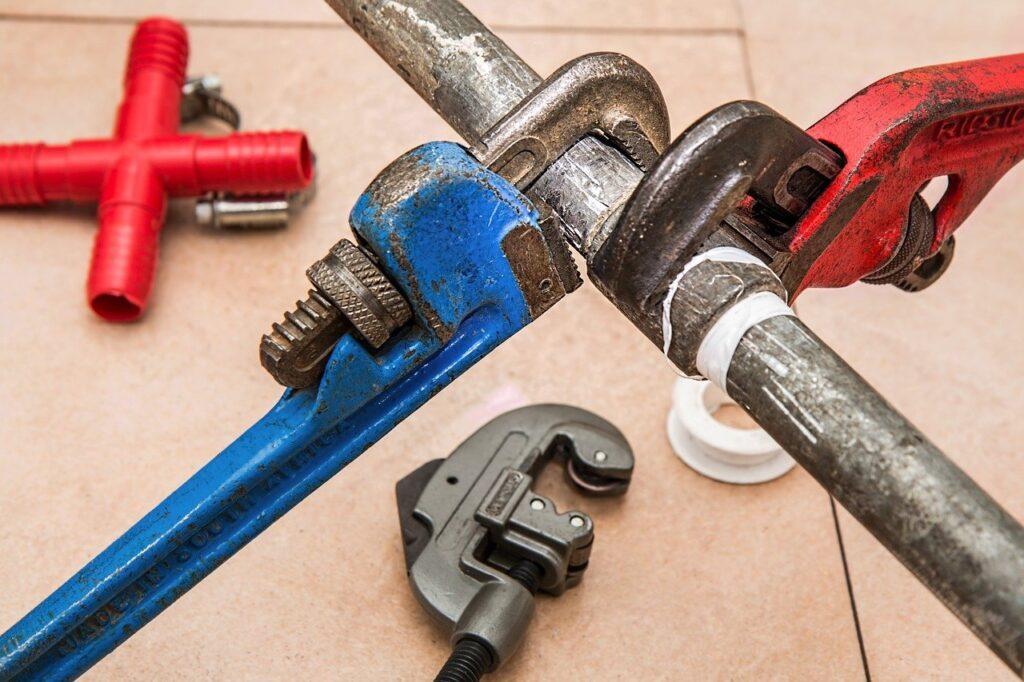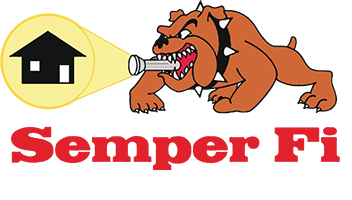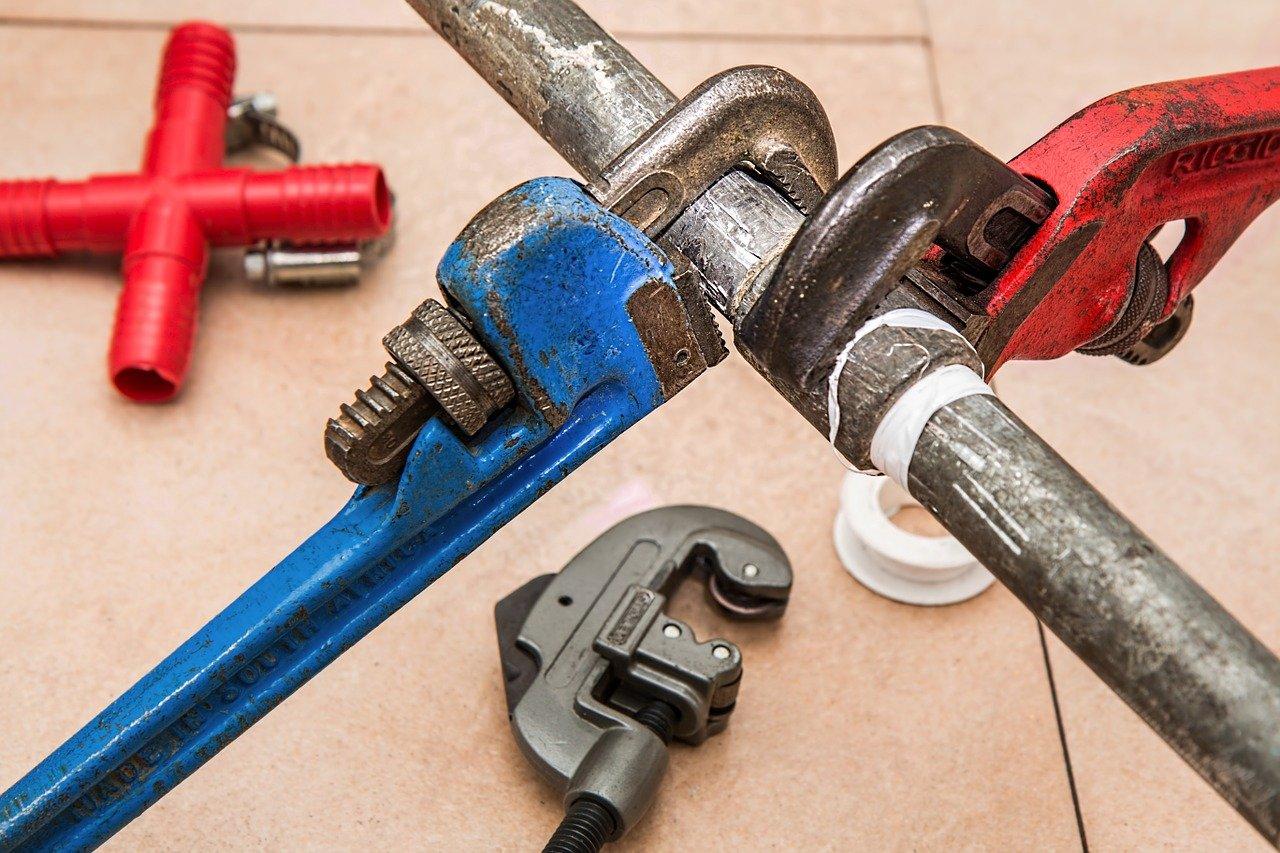Plumbers have been a common sight recently in the DFW Metroplex after the winter storm and the impact of frozen or burst pipes.
With that comes a lot of plumbing terminology that you may have not encountered. Here are some common plumbing definitions that you may hear from a plumber or even from your favorite home inspector.

Air Chambers
Pressure absorbing devices that eliminate water hammer. They should be installed as close as possible to the valves or faucet and at the end of long runs of pipe.
Air Gap (Drainage System)
The unobstructed vertical distance through the free atmosphere between the outlet of a water pipe and the flood level rim of the receptacle into which it is discharging.
Air Gap (Water Distribution System)
The unobstructed vertical distance through the free atmosphere between the lowest opening from any pipe or faucet supplying water to a tank, plumbing fixture, or other device and the flood level rim of the receptacle.
Air Lock
An air lock is a bubble of air which restricts the flow of water in a pipe.
Backflow
The flow of water or other liquids, mixtures, or substances into the distributing pipes of a potable water supply from any source or sources other than the intended source. Back siphonage is one type of backflow.
Back Siphonage
The flowing back of used, contaminated, or polluted water from a plumbing fixture or vessel into a potable water supply due to a negative pressure in the pipe.
Branch
Any part of the piping system other than the main, riser, or stack.
Branch Vent
A vent connecting one or more individual vents with a vent stack.
Building Drain
The part of the lowest piping of a drainage system that receives the discharge from soil, waste, or other drainage pipes inside the walls of the building (house) and conveys it to the building sewer beginning 3 feet outside the building wall.
Cross Connection
Any physical connection or arrangement between two otherwise separate piping systems, one of which contains potable water and the other either water of unknown or questionable safety or steam, gas, or chemical whereby there may be a flow from one system to the other, the direction of flow depending on the pressure differential between the two systems. (See Backflow and Back siphonage.)
Disposal Field
An area containing a series of one or more trenches lined with coarse aggregate and conveying the effluent from the septic tank through vitrified clay Pine or perforated, non-metallic pipe, laid in such a manner that the flow will be distributed with reasonable uniformity into natural soil.
Drain
Any pipe that carries waste water or water-borne waste in a building (house) drainage system.
Flood Level Rim
The top edge of a receptacle from which water overflows.
Flushometer Valve
A device that discharges a predetermined quantity of water to fixtures for flushing purposes and is closed by direct water pressures.
Flush Valve
A device located at the bottom of the tank for flushing water closets and similar fixtures.
Grease Trap
See Interceptor.
Hot Water
Potable water that is heated to at least 120°F and used for cooking, cleaning, washing dishes, and bathing.
Insanitary
Contrary to sanitary principles injurious to health.
Interceptor
A device designed and installed so as to separate and retain deleterious, hazardous, or undesirable matter from normal wastes and permit normal sewage or liquid wastes to discharge into the drainage system by gravity.
Leader
An exterior drainage pipe for conveying storm water from roof or gutter drains to the building storm drain, combined building sewer, or other means of disposal.
Main Vent
The principal artery of the venting system, to which vent branches may be connected.
Main Sewer
See Public Sewer.
Pneumatic
The word pertains to devices making use of compressed air as in pressure tanks boosted by pumps.
Potable Water
Water having no impurities present in amounts sufficient to cause disease or harmful physiological effects and conforming in its bacteriological and chemical quality to the requirements of the Public Health Service drinking water standards or meeting the regulations of the public health authority having jurisdiction.
P & T (Pressure and Temperature) Relief Valve
A safety valve installed on a hot water storage tank to limit temperature and pressure of the water.
P Trap
A trap with a vertical inlet and a horizontal outlet.
Public Sewer
A common sewer directly controlled by public authority.
Relief Vent
An auxiliary vent that permits additional circulation of air in or between drainage and vent systems.
Septic Tank
A watertight receptacle that receives the discharge of a building’s sanitary drain system or part thereof and is designed and constructed so as to separate solid from the liquid, digest organic matter through a period of detention, and allow the liquids to discharge into the soil outside of the tank through a system of open-joint or perforated piping, or through a seepage pit.
Sewerage System
A sewerage system comprises all piping, appurtenances, and treatment facilities used for the collection and disposal of sewage, except plumbing inside and in connection with buildings served and the building drain.
Soil Pipe
The pipe that directs the sewage of a house to the receiving sewer, building drain, or building sewer.
Soil Stack
The vertical piping that terminates in a roof vent and carries off the vapors of a plumbing system.
Stack Vent
An extension of a solid or waste stack above the highest horizontal drain connected to the stack. Sometimes called a waste vent or a soil vent.
Storm Sewer
A sewer used for conveying rain water, surface water, condensate. cooling water, or similar liquid waste.
Trap
A trap is a fitting or device that provides a liquid seal to prevent the emission of sewer gases without materially affecting the flow of sewage or waste water through it.
Vacuum Breaker
A device to prevent backflow (back siphonage) by means of an opening through which air may be drawn to relieve negative pressure (vacuum).
Vent Stack
The vertical vent pipe installed to provide air circulation to and from the drainage system and that extends through one or more stories.
Water Hammer
The loud thump of water in a pipe when a valve or faucet is suddenly closed.
Water Service Pipe
The pipe from the water main or other sources of potable water supply to the water-distributing system of the building served.
Water Supply System
The water supply system consists of the water service pipe, the water-distributing pipes, the necessary connecting pipes, fittings, control valves, and all appurtenances in or adjacent to the building or premises.
Wet Vent
A vent that receives the discharge of waste other than from water closets.
Yoke Vent
A pipe connecting upward from a soil or waste stack to a vent stack for the purpose of preventing pressure changes in the stacks.
For commercial property inspections in the Dallas/Fort Worth area, including a thorough and informative home inspection report, learn more at
or request a quote for a commercial inspection at
682-351-2267



